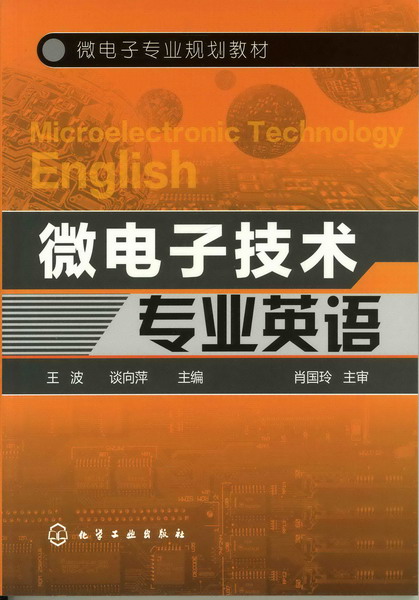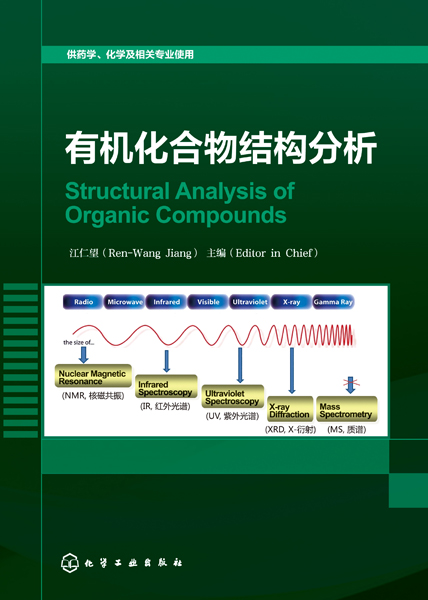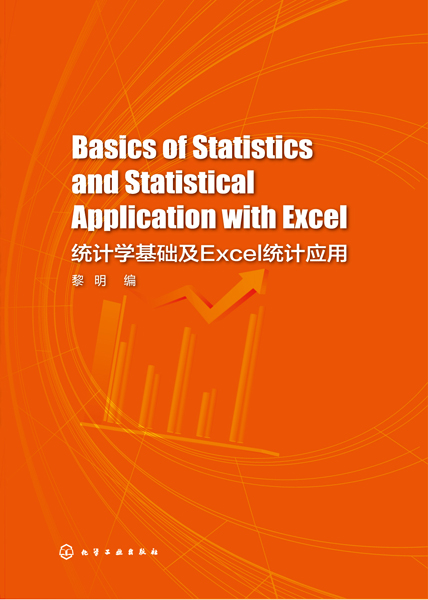跨境电子商务基础与实务(中英双语版)
定价:¥39.00
作者: 徐凡
出版时间:2019-01
出版社:中国铁道出版社
- 中国铁道出版社
- 9787113254582
- 1-1
- 263377
- 45234651-3
- 平装
- 16开
- 2019-01
- 198
- 168
- 管理学
- 电子商务类
- 经管
内容简介
本书按照理论与实践相结合、市场原理与现实案例相统一的原则,系统阐释了跨境电子商务zui新实务操作与商业模式。并以杭州、重庆为例,深度分析现阶段我国跨境电商行业的问题与市场挑战,同时总结跨境电子商务相关法律法规与风险控制核心经典方法。本书内容全面、体系完备,理论与实操相得益彰,旨在使读者全面理解、掌握跨境电子商务的基本理论、实践规范和趋势规律等,力求突出新理论、新知识、新技术和新方法,以培养、提升学习者开拓创新能力。另外,每章文后均配备时效性思考题,强化学习者综合商务素养与批判性思维能力。
本书适合作为国际贸易、国际经济、国际工商管理、商务英语等专业本科三年级及硕士一年级的教材,也可作为广大商务人士跨境电子商务培训教材,以及行业从业者自修提高的参考用书。
本书适合作为国际贸易、国际经济、国际工商管理、商务英语等专业本科三年级及硕士一年级的教材,也可作为广大商务人士跨境电子商务培训教材,以及行业从业者自修提高的参考用书。
目录
Chapter 1 Overview of E-commerce 1
1.1 Concept 2
1.2 Characteristics 4
1.2.1 Market globalization 4
1.2.2 The speed of transaction 5
1.2.3 The virtualization of transactions 6
1.2.4 Low cost 6
1.2.5 Transaction continuity 7
1.3 Classification 8
1.3.1 Classification by the participants in the transaction 8
1.3.2 Classification by technology adopted 10
1.3.3 Classification by related goods 11
1.4 Development history 12
1.4.1 Overall situation 12
1.4.2 Development process of global e-commerce 14
Chapter 2 Overview of Cross-border E-commerce 21
2.1 The definition of cross-border e-commerce 21
2.2 The characteristic of cross-border e-commerce 23
2.3 The classification of cross-border e-commerce 27
2.4 The development present situation in China 28
2.4.1 Market size 28
2.4.2 Scale structure 29
2.4.3 Target market 30
Chapter 3 Operating Mode 33
3.1 Graphic of operating mode 33
3.2 The characteristics of operating mode 34
3.2.1 Deepen of the electric business industry 34
3.2.2 Integrated marketing 34
3.2.3 Basis of large data 35
3.3 The operating mode of foreign trade imports and foreign trade exports 36
3.3.1 Foreign trade imports 36
3.3.2 Foreign trade exports 37
3.4 The process of operation 38
3.4.1 Logistics 38
3.4.2 Capital flows 39
3.4.3 The flow of management 41
3.4.4 Information flow 43
Chapter 4 Business Model of Cross-border E-commerce 45
4.1 Development status 45
4.2 Business model 45
4.2.1 Business to customer 46
4.2.2 Business to business 48
4.2.3 Customer to customer 49
4.2.4 Consumer to business 50
4.2.5 Business-Medium-Consumer 52
4.3 Comparison of the main modes of cross-border e-commerce 52
Chapter 5 Platform of Cross-border E-commerce 55
5.1 Concept of cross-border e-commerce 55
5.2 Trading platform 57
5.2.1 eBay 57
5.2.2 Haitao.com 58
5.2.3 Amazon 59
5.3 Payment platform 60
5.3.1 Electronic payment 60
5.3.2 PayPal 61
5.3.3 Alipay 62
5.4 Self-built cross-border e-commerce platform model 63
5.4.1 Concept 63
5.4.2 Advantages 64
Chapter 6 International Logistics Services Pattern 67
6.1 Concept of cross-border logistics 67
6.2 Classification of cross-border Logistics 67
6.2.1 Third-party logistics 68
6.2.2 Fourth party logistics 71
6.2.3 Overseas warehousing 71
6.3 Main international express 73
6.3.1 DHL express 73
6.3.2 United Parcel Service 74
6.3.3 Express mail service 75
6.4 The selection of cross-border logistics mode 75
6.4.1 Cross-border e-commerce export logistics mode 76
6.4.2 Cross-border e-commerce import logistics mode 77
Chapter 7 Technology of Cross-border E-commerce 79
7.1 Electronic data interchange 79
7.1.1 Definition 79
7.1.2 Characteristic 80
7.1.3 Challenges in EDI implementation 81
7.2 Big Data 82
7.2.1 Definition 82
7.2.2 Characteristics 83
7.2.3 Cross-border e-commerce credit evaluation system based on Big Data 84
7.3 Cloud computing 87
7.3.1 Definition 87
7.3.2 Cloud computing and environment 88
7.4 Information and communication technology 90
7.4.1 Definition 90
7.4.2 ICT development index 91
Chapter 8 Cross-border E-commerce in Hangzhou 95
8.1 Development status 95
8.1.1 Institutional mechanism innovation guarantee 95
8.1.2 Rapid growth in business size 96
8.1.3 The industrial system is gradually enriched 97
8.2 Major constraints for cross-border e-commerce in Hangzhou 98
8.2.1 Policy orientation is unclear 98
8.2.2 Regulation and staffing cannot meet the needs 99
8.2.3 Fierce competition among the pilot cities 100
8.3 Suggestions on the further development 101
8.3.1 Improve business scale and logistics efficiency 101
8.3.2 Vigorously promote and expand the influence of pilot 102
8.3.3 Explore cross-border trade export business 102
Chapter 9 Cross-border E-commerce in Chongqing 105
9.1 Development status 105
9.1.1 The exponential growth of cross-border e-commerce trading 106
9.1.2 Cross-border logistics 106
9.1.3 Customs supervision mode 107
9.2 Analysis of existing problems 108
9.2.1 Cross-border logistics restricts the development of cross-border
e-commerce 108
9.2.2 Regulatory standards still need to be improved 109
9.2.3 Shortage of talents 110
9.3 Related recommendations 110
9.3.1 Give full play to the advantages of location 110
9.3.2 Strengthen the supply chain construction of cross-border e-commerce 111
9.3.3 Strengthen the supervision of cross-border e-commerce market 112
9.3.4 Strengthen the introduction and cultivation of cross-border e-commerce
talents 113
Chapter 10 Threats and Challenges 115
10.1 Customs formality, legal and regulatory issues 115
10.1.1 Customs formality 115
10.1.2 Legal and regulatory issues 116
10.2 Online Dispute Resolution 117
10.2.1 Introduction 117
10.2.2 The dispute resolution procedure online 117
10.3 Talent cultivation 119
10.3.1 Introduction 119
10.3.2 Training cross-border e-commerce talents 121
Chapter 11 Prospect of Cross-border E-commerce 123
11.1 The trend of economic development under the new situation 124
11.2 More profits in the foreign trade market 126
11.3 Great space for development 128
Glossary 131
References 156
1.1 Concept 2
1.2 Characteristics 4
1.2.1 Market globalization 4
1.2.2 The speed of transaction 5
1.2.3 The virtualization of transactions 6
1.2.4 Low cost 6
1.2.5 Transaction continuity 7
1.3 Classification 8
1.3.1 Classification by the participants in the transaction 8
1.3.2 Classification by technology adopted 10
1.3.3 Classification by related goods 11
1.4 Development history 12
1.4.1 Overall situation 12
1.4.2 Development process of global e-commerce 14
Chapter 2 Overview of Cross-border E-commerce 21
2.1 The definition of cross-border e-commerce 21
2.2 The characteristic of cross-border e-commerce 23
2.3 The classification of cross-border e-commerce 27
2.4 The development present situation in China 28
2.4.1 Market size 28
2.4.2 Scale structure 29
2.4.3 Target market 30
Chapter 3 Operating Mode 33
3.1 Graphic of operating mode 33
3.2 The characteristics of operating mode 34
3.2.1 Deepen of the electric business industry 34
3.2.2 Integrated marketing 34
3.2.3 Basis of large data 35
3.3 The operating mode of foreign trade imports and foreign trade exports 36
3.3.1 Foreign trade imports 36
3.3.2 Foreign trade exports 37
3.4 The process of operation 38
3.4.1 Logistics 38
3.4.2 Capital flows 39
3.4.3 The flow of management 41
3.4.4 Information flow 43
Chapter 4 Business Model of Cross-border E-commerce 45
4.1 Development status 45
4.2 Business model 45
4.2.1 Business to customer 46
4.2.2 Business to business 48
4.2.3 Customer to customer 49
4.2.4 Consumer to business 50
4.2.5 Business-Medium-Consumer 52
4.3 Comparison of the main modes of cross-border e-commerce 52
Chapter 5 Platform of Cross-border E-commerce 55
5.1 Concept of cross-border e-commerce 55
5.2 Trading platform 57
5.2.1 eBay 57
5.2.2 Haitao.com 58
5.2.3 Amazon 59
5.3 Payment platform 60
5.3.1 Electronic payment 60
5.3.2 PayPal 61
5.3.3 Alipay 62
5.4 Self-built cross-border e-commerce platform model 63
5.4.1 Concept 63
5.4.2 Advantages 64
Chapter 6 International Logistics Services Pattern 67
6.1 Concept of cross-border logistics 67
6.2 Classification of cross-border Logistics 67
6.2.1 Third-party logistics 68
6.2.2 Fourth party logistics 71
6.2.3 Overseas warehousing 71
6.3 Main international express 73
6.3.1 DHL express 73
6.3.2 United Parcel Service 74
6.3.3 Express mail service 75
6.4 The selection of cross-border logistics mode 75
6.4.1 Cross-border e-commerce export logistics mode 76
6.4.2 Cross-border e-commerce import logistics mode 77
Chapter 7 Technology of Cross-border E-commerce 79
7.1 Electronic data interchange 79
7.1.1 Definition 79
7.1.2 Characteristic 80
7.1.3 Challenges in EDI implementation 81
7.2 Big Data 82
7.2.1 Definition 82
7.2.2 Characteristics 83
7.2.3 Cross-border e-commerce credit evaluation system based on Big Data 84
7.3 Cloud computing 87
7.3.1 Definition 87
7.3.2 Cloud computing and environment 88
7.4 Information and communication technology 90
7.4.1 Definition 90
7.4.2 ICT development index 91
Chapter 8 Cross-border E-commerce in Hangzhou 95
8.1 Development status 95
8.1.1 Institutional mechanism innovation guarantee 95
8.1.2 Rapid growth in business size 96
8.1.3 The industrial system is gradually enriched 97
8.2 Major constraints for cross-border e-commerce in Hangzhou 98
8.2.1 Policy orientation is unclear 98
8.2.2 Regulation and staffing cannot meet the needs 99
8.2.3 Fierce competition among the pilot cities 100
8.3 Suggestions on the further development 101
8.3.1 Improve business scale and logistics efficiency 101
8.3.2 Vigorously promote and expand the influence of pilot 102
8.3.3 Explore cross-border trade export business 102
Chapter 9 Cross-border E-commerce in Chongqing 105
9.1 Development status 105
9.1.1 The exponential growth of cross-border e-commerce trading 106
9.1.2 Cross-border logistics 106
9.1.3 Customs supervision mode 107
9.2 Analysis of existing problems 108
9.2.1 Cross-border logistics restricts the development of cross-border
e-commerce 108
9.2.2 Regulatory standards still need to be improved 109
9.2.3 Shortage of talents 110
9.3 Related recommendations 110
9.3.1 Give full play to the advantages of location 110
9.3.2 Strengthen the supply chain construction of cross-border e-commerce 111
9.3.3 Strengthen the supervision of cross-border e-commerce market 112
9.3.4 Strengthen the introduction and cultivation of cross-border e-commerce
talents 113
Chapter 10 Threats and Challenges 115
10.1 Customs formality, legal and regulatory issues 115
10.1.1 Customs formality 115
10.1.2 Legal and regulatory issues 116
10.2 Online Dispute Resolution 117
10.2.1 Introduction 117
10.2.2 The dispute resolution procedure online 117
10.3 Talent cultivation 119
10.3.1 Introduction 119
10.3.2 Training cross-border e-commerce talents 121
Chapter 11 Prospect of Cross-border E-commerce 123
11.1 The trend of economic development under the new situation 124
11.2 More profits in the foreign trade market 126
11.3 Great space for development 128
Glossary 131
References 156










